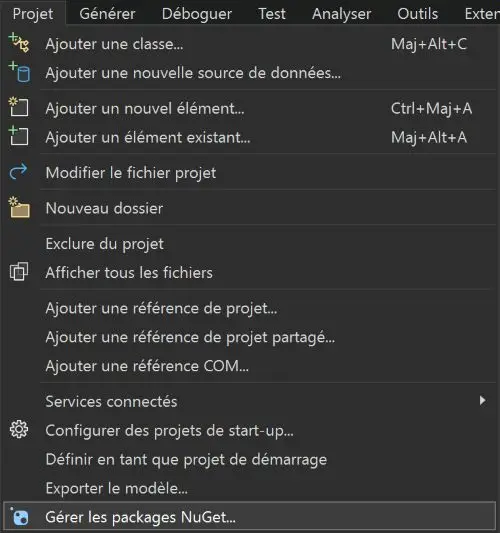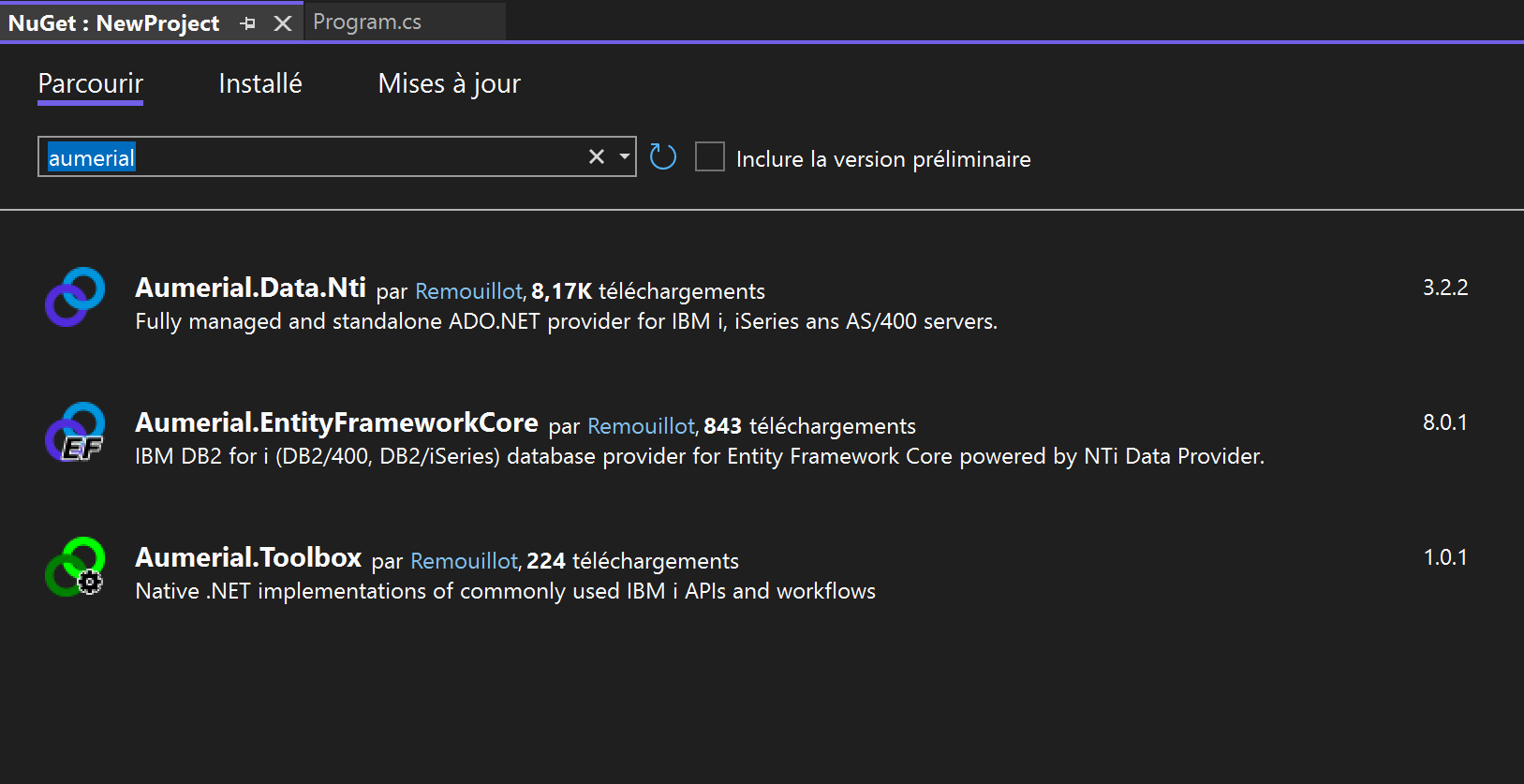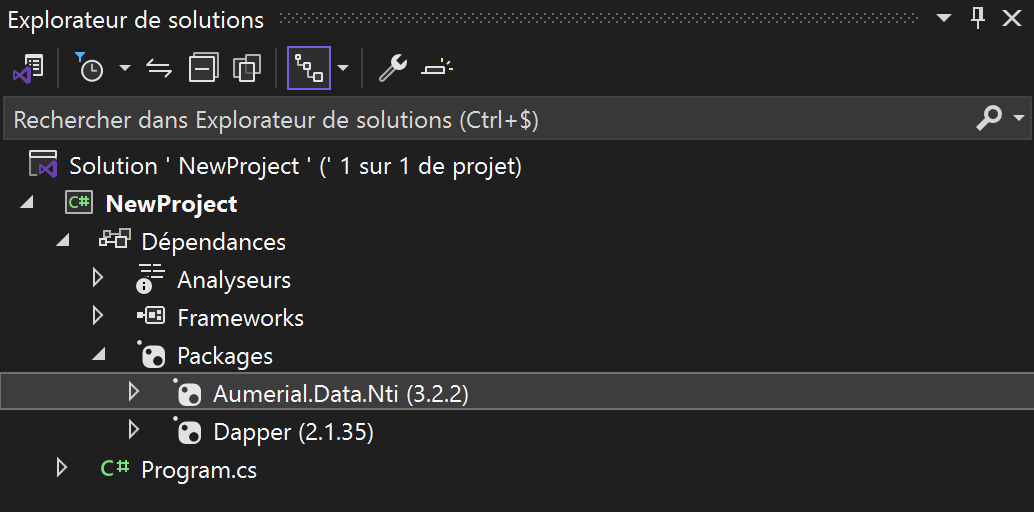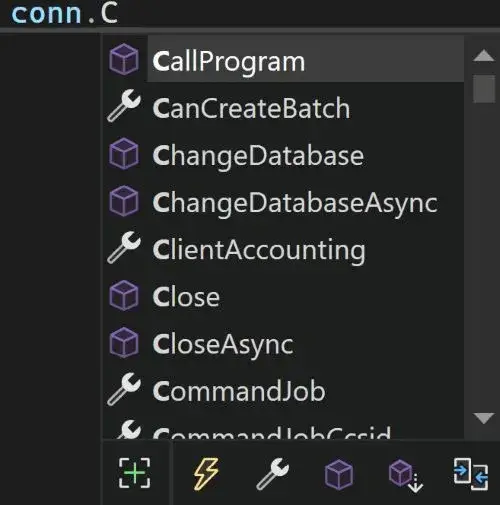Quick Start.
NTi is designed to address a reality that few tools address: you can connect your IBM i to .NET and be up and running in less than 15 minutes. No disruption to your business, no training required, no complex configuration.
Everything integrates directly into Visual Studio by simple referencing. You code in C# with a familiar syntax and an immediate grasp of the language, with no tedious RPG preambles.
NTi is also fully cross-platform, running on Windows, Linux and macOS, and agnostic to IBM i versions. No matter what your environment or system version.
Simple, fast and immediate!
1. Open a Visual Studio project.
Right-click on the solution, then select Manage NuGet packages.

2. Install NTi and Dapper via NuGet.
In the NuGet package management interface, search for Aumerial.Data.NTi and install it.
We also recommend installing Dapper, a micro ORM (Object-Relational-Mapper) that perfectly complements NTi.
💡 Dapper lets you execute SQL queries directly in your C# code, while automatically mapping the results to your business objects. It simplifies data processing and enriches your objects with intuitive methods such as
QueryandExecutefor more natural and efficient interactions with your databases.

3. Check installation.
Make sure that Aumerial.Data.NTi and Dapper appear in the project tree.

4. Reference NTi in your code.
Add this line to the beginning of your C# file.
using Aumerial.Data.Nti;
using Dapper;5. Create an NTi connector.
Implement the connection string to your IBM i.
var conn = new NTiConnection("server=serverName;user=userName;password=password");
conn.Open();6. Take advantage of NTi features.
NTi offers a standard syntax in C# or VB for accessing IBM i resources. Here are a few examples:
- Reading data.
conn.Query("SELECT * FROM PAYLIB.PAYROLL");- Update data.
conn.Execute("UPDATE PAYLIB.PAYROLL SET NAME_EMPLOYEE = 'SMITH' WHERE NUMBER_EMPLOYEE = 'B1243'");- Execute a CL command or program.
conn.ExecuteClCommand("ADDIBLE PAYROLL2025");
conn.CallProgram("PAYLIB", "PAYLIST");- Executing a stored procedure.
conn.Query("PAYROLL.STOREPROC1", commandType: CommandType.StoredProcedure);- All IBM i resources accessible with standard C# syntax.

You are now ready to exploit the full resources of your IBM i with all the features offered by .NET.